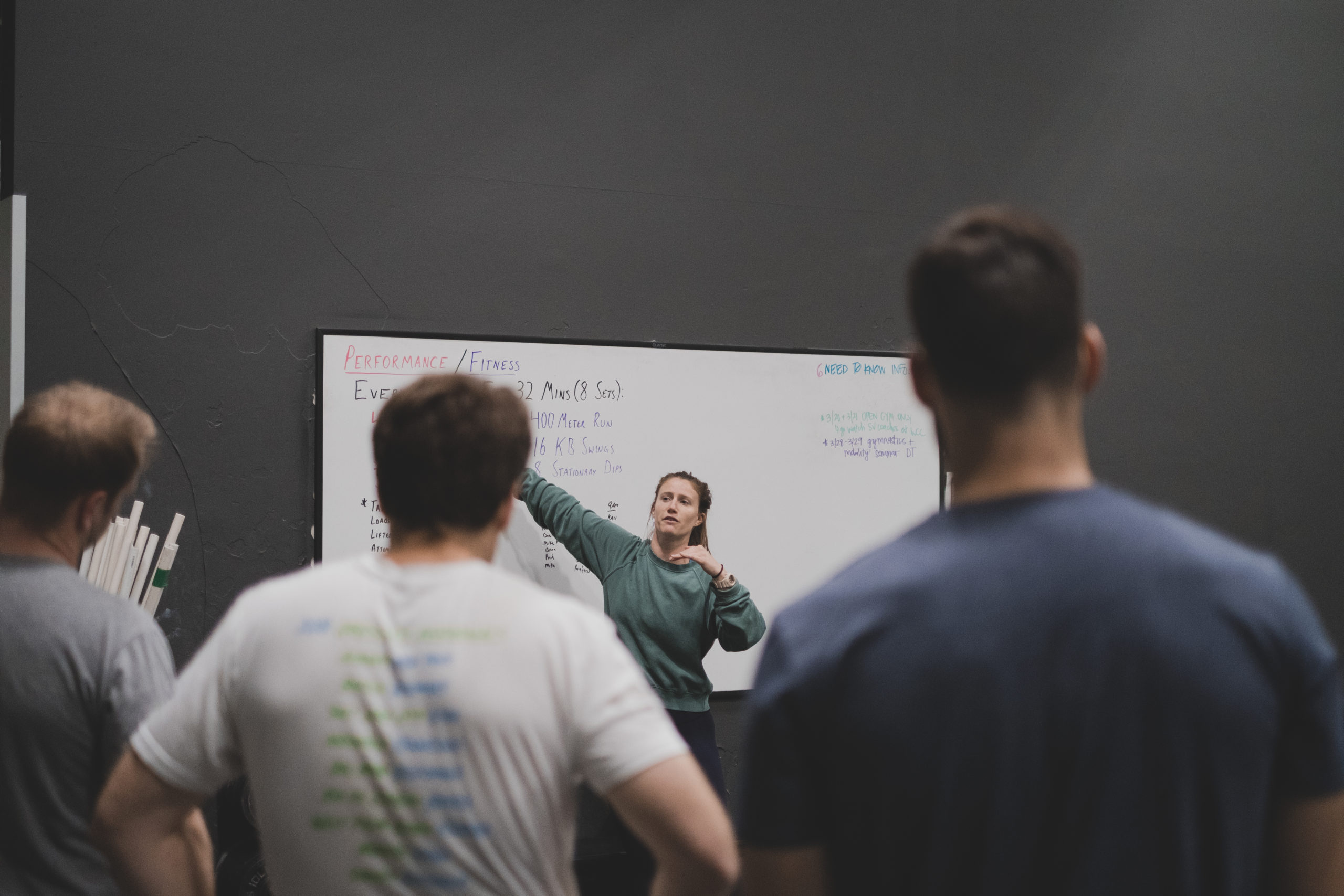
Excellent Coaches Make Decisions that Pull ‘Double Duty’
Written by Kirsten Ahrendt
The best coaches make things look effortless – their classes somehow accomplish learning and training simultaneously, balance structure with elements of freedom and fun, and combine entertainment with intentional, mindful-movement. How do they do it? What’s the secret sauce? Many factors combine to produce this type of class experience but an often overlooked key ingredient is how they maximize coaching decisions that pull double duty.
What does it mean to make coaching decisions “pull double duty”?
It is taking coaching action that informs or impacts a class on a level of multitudes rather than on a singular dimension; think of it as the difference between thinking in an X-Y versus X-Y-Z axis. When coaches incorporate logistical and tactical decisions that “pull double duty”, they quite literally fit more value and opportunity into their class time. Double duty decisions can include use of language at the whiteboard, equipment selections in warmups, incorporation of progressive drills in warm-ups, or selection of coaching focal points.
Many of these subtle decisions made by seasoned coaches go unnoticed to an untrained or novice eye because they flow so effortlessly, but they are the glue that additional coaching value and impact adhere to. Let’s explore some ways they can be integrated.
Make Warm-Up Selections: Prepare, Teach, & Demonstrate
When the programming gets packed (as it often does at Invictus due to dual track programming), you have to accomplish a lot with your warm-up while also being efficient – members must be both physically and logistically prepared to do work. This means they KNOW what regression, progression, or alternative customization is correct for them and HOW to implement it. Whew! It’s a lot! Our master coaches make warm-up selections pull double duty by choosing selections that simultaneously prepare, teach, AND demonstrate. By doing this, they avoid instances of physically warming up a class (preparation) only to have to then create additional time after which to stop and teach new skills, progressions or movement demonstrations. If incorporated well, this method of Prepare – Teach – Demonstrate creates opportunity for members to build agency by self-assessing in the moment what progression was appropriate for them in the warm-up.
Example: Part B of the workout has Strict Handstand Push-Ups (SHSPU) in it.
Double Duty Opportunity: The SHSPU is an advanced and somewhat technical gymnastic skill. Using simple handstand and handstand push-up progressions in the warm-up can provide gentle (read: less than maximal load) ways to physically prepare the shoulder, elbow, and wrist joint to load and press bodyweight. As these positions are progressed and the class is more thoroughly warmed up, identify more advanced progressions as options to customize the movement in Part B later on. Now the members have also practiced and been exposed to a variety of options and will need less “teaching” later on. You can spend 10 minutes drilling and teaching various SHSPU positions and drills, or you can sprinkle the positions and drills in throughout your warm-up and use them to prepare, teach, and demonstrate throughout the warm-up. This doesn’t always work – but when it does, it’s nice to have classes learn while preparing.
Less Warm-Up Equipment – More Movement Essence
Part of the fun (and also a great way to learn as a coach) is to experiment with how you can teach the fundamental essence of a movement pattern and drill “positions” creatively with a non-traditional piece of equipment. The greater the number of equipment needs for warm-up, the greater the potential for “dead minutes” in equipment transitions. We’ve all sent a class of 16 people to go grab a KB and it’s as if they stopped at the corner coffee shop on the way.
The novelty of warming up for a deadlift with a wall ball or a band with a single KB can keep warm-ups engaging and novel, develop neuroplasticity, and teach athletes the essence of a movement pattern (lots of carry-over) rather than the technical component of a skill (less carry-over). Use 1-2 pieces of equipment and focus on creatively using them to prime the major muscle groups and joints and teaching the essence of a motor pattern to come.
Sometimes we need our warm-ups to eventually progress to incorporate the specific implement that will be used in a skill…but not always, and not always as soon as you think. A great coach once said, “If you can dodge a wrench, you can dodge a dodgeball!”… and what they meant was if you can explosively throw a wall ball, and do a single-arm windmill with it, you’ll likely understand the components necessary to power snatch a barbell. (I said what I said).
Example: Part A includes 5×3 Heavy Deadlifts and Tempo Romanian Deadlifts (RDL)
Double Duty Opportunity: A coach chooses 1-2 pieces of equipment to prime the major muscles, joints, and movement pattern without relying on a barbell. Get creative – what pieces of equipment would physically prepare the body to create tension, practice hinging, and create a mind-body connection to the primary movers? I’d pick a band and a wall ball – firing up lats, the core, hamstring and glute activation. Prime hinge movement with banded lat pulls and banded Deadlifts, isolate posterior activation with hamstring med ball curls and glute bridges, and prep CNS and skill with med ball single-leg RDLs and ball slams.
Rest Intervals Become Coaching Intervals
When you’re a passionate coach, you have a strong desire to actually TEACH, not just cheer or motivate in classes. If you’re not careful or creative, teaching can lead to static moments in the class where people are being talked at and trying to absorb too much. Great coaches get creative with layering in value throughout the class. Rest intervals are a great example of finding minutes in a class to pull double duty. It can be tempting to coach it ALL at the whiteboard brief (intention, stimulus, gameplan tips, etc) – but remember, people only take in so much. If rest interval minutes are incorporated in the workout, they are minutes that are already reserved as part of the class plan – inject them with additional value by using them to give coaching cues or points of focus that you didn’t get to fully address in the brief – TA-DA! Rest intervals pulling double duty!
In Summary:
Making coaching decisions that pull “double duty” quite literally saves time (minutes are GOLD in a 1-hr group class), and creates opportunity to layer in deeper value for members as well as novelty and creativity for experienced coaches. Get creative and think outside the box as a coach. Do you have great ways you already incorporate this? Share with us in a comment below!

Thanks!
The coaching profession is ever-changing and coaches at each level of sport competition need to know more than just the Xs and Os in order to be successful. As the primary individuals tasked with developing athletes and helping them achieve their goals, coaches should acquire a working knowledge of all areas affiliated with performance enhancement. Specifically, the disciplines of sports administration, sports medicine, strength and conditioning, and sports psychology can assist coaches while physically and mentally training their athletes. This article illustrates six primary components of these disciplines: risk management, injury prevention, communication, nutrition, goal setting, and athlete development. It… Read more »